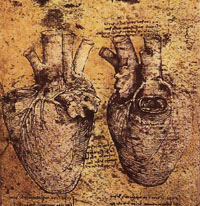
Circulation

 |
The circulatory system is an aspect related to animals that have a large body size. Animals of a certain size faces a challenge in terms of transporting fluids, molecules and ions throughout the body. Some animals (especially smaller and/or inactive ones) lack the system while others have system (esp. larger and/or more active) allowing them to circulate fluid throughout the body aided by a muscular pump. This part of the class will give you a chance to take a comparative look at circulation in a variety of animals, but will emphasize circulation as encountered in the human species. This organ system is also the one that gives rise to numerous problems in our species in the form of cardivascular diseases. Five of the most common reasons for why people get hospitalized is linked to heart problems. |

| Page
created by:
Peter
Svensson
Updated: November 9, 2009 |